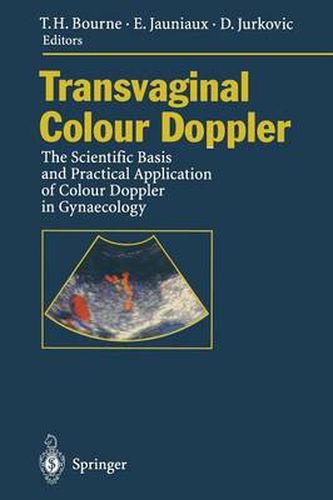Readings Newsletter
Become a Readings Member to make your shopping experience even easier.
Sign in or sign up for free!
You’re not far away from qualifying for FREE standard shipping within Australia
You’ve qualified for FREE standard shipping within Australia
The cart is loading…






This title is printed to order. This book may have been self-published. If so, we cannot guarantee the quality of the content. In the main most books will have gone through the editing process however some may not. We therefore suggest that you be aware of this before ordering this book. If in doubt check either the author or publisher’s details as we are unable to accept any returns unless they are faulty. Please contact us if you have any questions.
Since the pioneering work of Donald and his first Lancet paper in 1958, the use of ultrasound in obstetrics and gynaecology has evolved rap idly. The introduction of grey scale techniques enhanced our ability to identify different tissues on the basis of their texture. However, it was the introduction of the linear array real-time scanner in the mid seven ties that changed ultrasound from being an eccentric art form to a readily available and usable technique. This led to the first reports of the diagnosis of neural tube defects using ultrasound by Campbell, as well as the establishment of fetal biometry. In the midst of this activity the parallel development of the transvaginal probe by Kratochwill went almost unnoticed by most gynaecologists. Yet the application of this technique has since had a major impact on many areas of gyna ecological practice, and on infertility in particular. Since the demon stration of transvaginal follicle aspiration, the vaginal route has become standard for most invasive ultrasound guided gynaecological procedures. The relatively new technical advance of transvaginal colour Doppler may potentially have just as great an impact. The introduction and use of transvaginal colour flow imaging has facili tated the study of vascular changes within the pelvis.
$9.00 standard shipping within Australia
FREE standard shipping within Australia for orders over $100.00
Express & International shipping calculated at checkout
This title is printed to order. This book may have been self-published. If so, we cannot guarantee the quality of the content. In the main most books will have gone through the editing process however some may not. We therefore suggest that you be aware of this before ordering this book. If in doubt check either the author or publisher’s details as we are unable to accept any returns unless they are faulty. Please contact us if you have any questions.
Since the pioneering work of Donald and his first Lancet paper in 1958, the use of ultrasound in obstetrics and gynaecology has evolved rap idly. The introduction of grey scale techniques enhanced our ability to identify different tissues on the basis of their texture. However, it was the introduction of the linear array real-time scanner in the mid seven ties that changed ultrasound from being an eccentric art form to a readily available and usable technique. This led to the first reports of the diagnosis of neural tube defects using ultrasound by Campbell, as well as the establishment of fetal biometry. In the midst of this activity the parallel development of the transvaginal probe by Kratochwill went almost unnoticed by most gynaecologists. Yet the application of this technique has since had a major impact on many areas of gyna ecological practice, and on infertility in particular. Since the demon stration of transvaginal follicle aspiration, the vaginal route has become standard for most invasive ultrasound guided gynaecological procedures. The relatively new technical advance of transvaginal colour Doppler may potentially have just as great an impact. The introduction and use of transvaginal colour flow imaging has facili tated the study of vascular changes within the pelvis.